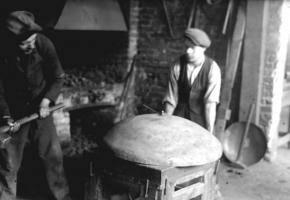
The first design of the Power Plant for Warsaw
The first small power plant was launched in 1895 on Marszałkowska Street, which powered, among others, the lighting of fairgrounds near the Ordynacka Street - it can be considered the first power transmission in Warsaw at a considerable distance - approx. 1200 m.
1896
129 lat temu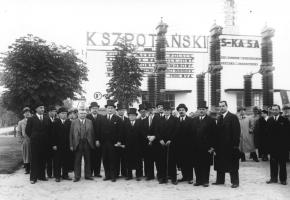
Power plant design by William H. Lindley
According to this design, Warsaw was to be powered by a power plant built in Powiśle district, and the grid voltage was supposed to be 5 k~ on the high side and 120 Y on the low-side of single-phase current. Adoption of the high voltage of 5 kY was an innovative solution at that time, because in those years power plants in Europe were operated at 2-4 kV voltage. Initially, the power plant’s output was planned at 3 MW, and 10 MW in the future.
1898
127 lat temu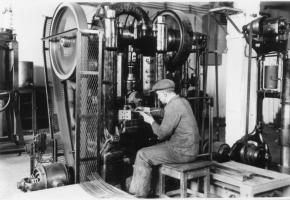
Electrification of the Pruszkow village
In November 1913, the then government adopted a resolution recommending the construction of a power plant and electrification of the Pruszkow village. On November 24, 1913, the Plenipotentiaries of the Pruszkow village, Count Antoni Potulicki and Joseph Troetzer, Eng., signed an agreement with a representative of the company Gesellschaft fur Elektrische Unternehmungen (Association of Electrical Enterprises) from Berlin, Aleksander Termos, Eng., concerning the construction of electrical lighting network.
1913
112 lat temu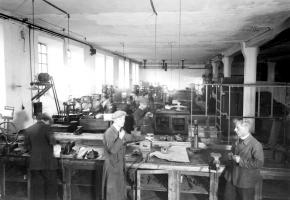
The Pruszkow Power Plan
On July 30, 1914, a makeshift power plant in Pruszkow, with its output of 90 KW, started operations. The Association of Electrical Enterprises (Gesellschaft fur Elektrische Unternehmungen) from Berlin as granted a 40-year concession for the construction of electricity networks in the whole municipality of Pruszkow. It powered 350 light bulbs.
1914
111 lat temu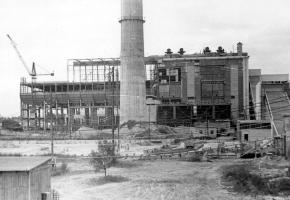
Acquisition of the Warsaw Power Plant
The German army took over the Warsaw Power Plant. The period of the German rule meant, first of all, a reduction in the production of electricity, which in turn led to the introduction of limits on electrical energy consumption by residents, service establishments, and limited the street lighting.
1915
110 lat temu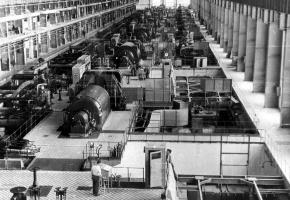
Expansion of the Warsaw Power Plant
The establishment of the National Board of the Warsaw Power Plant.
1917
108 lat temu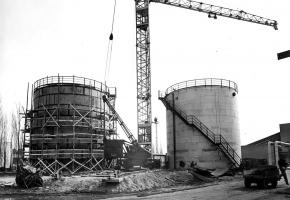
Polish energy company buys all the assets of the Pruszkow Power Plant
On December 5, 1919, the then largest Polish energy company “Siła i Światło” bought all the power plant’s assets from the Association of Electrical Enterprises for the sum of 350 000 German marks, thus accepting all obligations of the German company associated with the electrification of the Pruszkow surroundings. Next, the energy company formed a joint-stock company under the name “Elektrownia Okręgowa w Pruszkowie Spółka Akcyjna”. The task of the new company was the operation of the makeshift power plant and the construction of the central power plant including the expansion of the transmission network.
1919
106 lat temu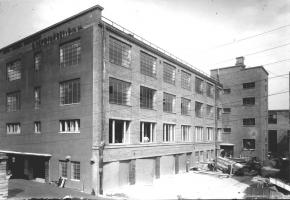
The Warsaw Power Plant becomes the property of the city
The acquisition of the Power Plant took place on the basis of the judgment of the Regional Court in Warsaw. The initiator of the actions related to the acquisition was the then mayor of the city, Stefan Starzynski. The mayor believed that the Association failed to meet its obligations under the concession, the process of the city’s electrification was behind the city’s development, and the residents incurred unreasonable costs for their access to electricity.
1936
89 lat temu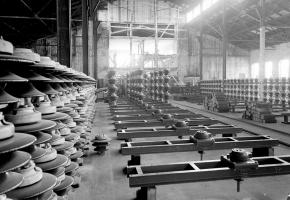
Preparations for a possible outbreak of war
Shelters built on the facilities of the Warsaw Power Plant on August 1st, 1938.
1938
87 lat temu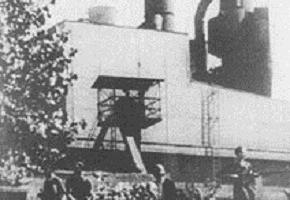
First days of the war in the Warsaw Power Plant
At the outbreak of World War II, the Warsaw Power Plant had 20 boilers and 8 turbine generators, whereas during the siege 4 boilers and 2 turbines were operational. The first days of the war in the Power Plant were quiet, and the whole crew was on their stations. Regular fire aimed at the power plant began on September 7th, but did not cause much damage. During the subsequent attacks in mid-September, a fire broke out on the roof of the engine room. The crew’s actions focused on making sure that the fire does not get through to turbine sets and other devices. In order to prevent flooding by rainwater, employees quickly installed covers made of boards and canvas.
1939
86 lat temu
Seizing the Pruszkow Power Plant
German troops approaching Warsaw seized the Pruszkow Power Plant. During this seizure, the plant was operational. However, its output decreased due to the damage to the transmission network caused by warfare. After the capitulation of Warsaw, the work on repairing the damage commenced. Among other things, the line connecting Pruszkow with Wola was repaired, which allowed to power the western part of Warsaw.
1939
86 lat temu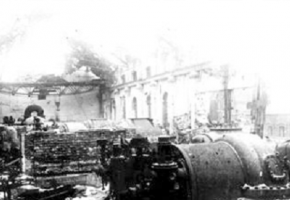
The bombing and rebuilding of the Warsaw Power Plant
The Warsaw Power Plant was operational until September 28th. On that day, the numerous cases of damage caused by an air-ride made it impossible to restart the power plant. After the Germans had entered Warsaw, the Power Plant was put under military supervision, which was next replaced by the civilian one. In the first months of the occupation, the Power Plant’s crew took mainly to reconstructing the plant and restoring its ability to generate power. Experts from the German company Siemens, brought to Warsaw specifically for this project, took part in the reconstruction of the power plant. Already on October 4th the boiler no. 23 and the 15 MW turbine generator no. 9 were started, and at the end of the year it was possible to connect virtually all consumers to the network.
1939
86 lat temu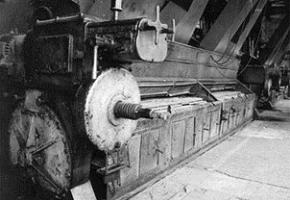
Modernization of the Warsaw Power Plant
At that time, a cable was laid under the bottom of the Vistula river to power the right bank districts. Until then, power for the Praga district was delivered via cables laid on the Kierbedzia bridge (now Śląsko-Dąbrowski bridge) and the Poniatowski bridge. Also, the voltage in the grid was changed from 120 V to 220 V.
1940
85 lat temu
The occupation vs. the Pruszkow Power Plant
During the occupation, the power plant operated almost at full capacity. Electricity production in 1941 was 86,500 MWh and in 1943 - as much as 110,500 MWh. The crew of the Pruszkow Power Plant also conducted conspiratorial activities. The Home Army underground group was established. It was associated with the 6th Helenow Region, 7th District of the Home Army - “the Collar”. Many commanders of “the Collar” received the so called iron papers issued by the Power Plant, even though they were not in fact employed there. A unit consisting of 45 people was formed on the territory of the Power Plant, code named “Water lily”. The group underwent training and gathered weapons.
1941
84 lat temu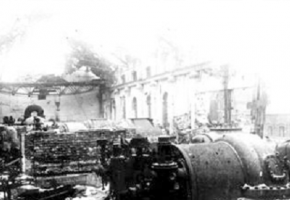
Germans blow up the working Power Plant
The Power Plant’s area was mined by the German technical group TB-6. For this purpose, Germans used 25 aerial bombs weighing 150 kg each and 10 crates of dynamite. German soldiers ordered the crew to leave the facility and on January 6, 1945 at approx. 5 pm blew up the working power plant. The Pruszkow Power Plant was one of the most damaged power plants in Poland. The degree of destruction, according to the Central Energy Board, was estimated at over 80%.
1945
80 lat temu
Wyzwolenie i plany odbudowy
Warsaw is liberated from the Nazi occupation. On the same day the Warsaw power engineers, including those working in the Praga district, reached the destroyed power plant in the Powiśle district to inspect the damage. The destruction of the Warsaw Power Plant was so immense that the authorities even wondered if its reconstruction is at all possible. Opponents of the Power Plant located in the Powiśle district jumped at the chance to get rid of the facility they considered harmful to the city center. The most tenacious advocates of the Warsaw Power Plant’s rebuilding were power engineers themselves, including their first post-war director Stanislaw Beniger. They found that the damage to the turbine sets and boilers was not that extensive, and it was possible to deploy the first devices the very same year.
1945
80 lat temu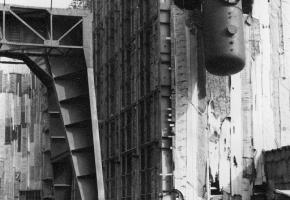
The decision to build the Żerań CHP Plant
The decision to build a collector combined heat and power generating plant, with the electric power of 150 MW and the heating power of 520 MW, was made in 1949. The preliminary design of the Żerań CHP Plant was developed by Biuro Projektów Energetycznych in Warsaw, and the technical design by “Ciepłoprojekt” in Leningrad.
1949
76 lat temu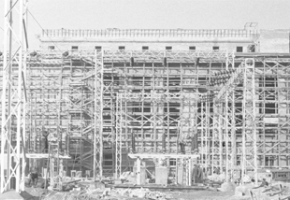
Construction work on the Żerań CHP Plant starts
Construction work on the Żerań CHP Plant starts. Core equipment is delivered by the Soviet Union.
1951
74 lat temu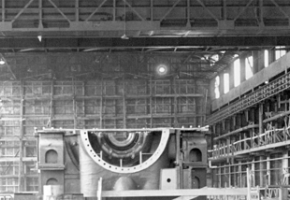
Commissioning of the first turbine at the Żerań CHP Plant
The first turbine set with the capacity of 25 M~ is deployed, which initially generates only electric power. Core equipment is delivered by the Soviet Union.
1954
71 lat temu
Siekierki
The construction of the CHP Plant starts. The “Siekierki CHP Plant Under Construction” in founded.
1958
67 lat temu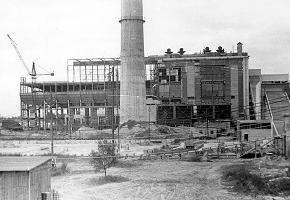
Deployment of the Siekierki CHP Plant
On December 4, 1961 the first condensing turbine set is put into operation, generating only electricity, with the capacity of 50 MW.
1961
64 lat temu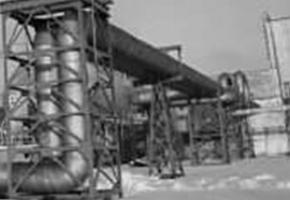
Deployment of the Wola Heating Plant
The Wola Heating Plant is deployed. Initially, 2 hot water boilers of the type PTWM 100 are installed, manufactured by the Taganrog Boiler-Making Works. These are water-tube, single-pass boilers, fired by heavy fuel oil (mazout), with the capacity of 116 MW each.
1971
54 lat temu
Deployment of the Kawęczyn Heating Plant
The Kawęczyn Heating Plant is the third largest source of thermal power for Warsaw. It was launched as a heating plant. It features a chimney, which is one of the most interesting buildings in Warsaw. It has a height of 300 m and is higher than the Palace of Culture and Science. It had its own independent chemical laboratory, an electrical equipment testing lab, a large electrical and mechanical workshop and modern warehouse facilities. Measures were taken, in cooperation with research and scientific institutes, towards optimizing the economics
1983
42 lat temu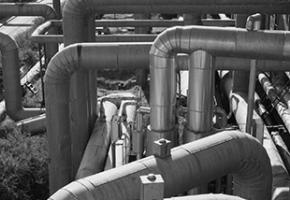
The organizational structure of the Warsaw power sector
Zespół Elektrociepłowni Warszawa (ZEW) changed its name to Przedsiębiorstwo Państwowe Elektrociepłownie Warszawskie (EW) on April 15, 1992. ZREW (Zakład Remontowy Energetyki Warszawa) was transformed into a sole shareholder company of the State Treasury and adopted the name ZREW S.A.
1992
33 lat temu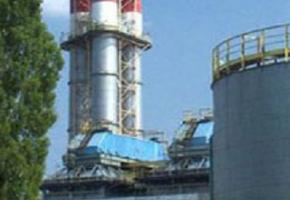
The organizational structure of the Warsaw power sector
On December 23, 2002, RWE bought 85% of STOEN S.A. shares.
2002
23 lat temu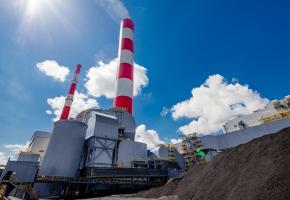
Effective flue gas desulfurization in the Siekierki CHP Plant
Already in the first heating season, during which we use our newly built wet flue gas desulfurization installation in the Siekierki CHP Plant, we obtain the expected environmental effect. On January 4, 2013 the Inspector of Environmental Protection in the Mazowieckie Province issued an opinion, which confirms the achieved environmental effect resulting from the construction of the wet flue gas desulfurization installation. Sulfur dioxide emissions fell by more than 4586 tons/year. This means that as a result of this investment 70% of the installed capacity is desulfurized.
2013
12 lat temu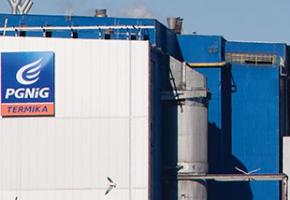
CHP plants currently
Currently, the primary role of the Żerań CHP Plant is to deliver thermal power to the northern part of the city. In addition, the electricity is generated in combination. The Wola Heating Plant is currently operated only during the heating season, and at lower outdoor temperatures at that. The heating plant supplies two district heating mains: “F” in the direction of the city centre, and “J” in the direction of Jelonki. Already in the first heating season, during which we use our newly built wet flue gas desulfurization installation in the Siekierki CHP Plant, we obtain the expected environmental effect. The Inspector of Environmental Protection in the Mazowieckie Province issued an opinion, which confirms the achieved environmental effect resulting from the construction of the wet flue gas desulfurization installation. Sulfur dioxide emissions fell by more than 4586 tons/year. This means that as a result of this investment 70% of the installed capacity is desulfurized.
